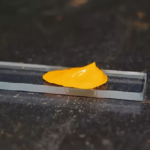If your bath needs restoration, we recommend using enameling. It is important to know that the enameling of baths is the most common and inexpensive way to extend your bath of life.
With the help of a brush, the surface of the bath is coated with a neatly thin layer of special enamel, which contains epoxy resin. It should be noted that before the restoration work, the masters must assess the condition of the bath and if there are chips, bumps, through holes and cracks, then they are eliminated before the enamel is applied.
Bath enameling is currently a fairly common procedure, since thanks to it you can make a new bath inexpensively and quickly. The service life of the bath after restoration, as a rule, is at least 5 years. Basically, white enamel is used when enameling baths, however, it is possible to cover with any other color. The enameling of the bath is performed as follows: the bath is originally processed, the surface with a special drill with a circle form is aligned, and the surface of the bath is puttled. Then, with the help of baking soda, the surface of the bath is degreased, heats with hot water, after which it is wiped dry.
The next stage is painting a bath enamel. First, the soil layer is applied, then the enamel is applied to the bottom and the sidewalls of the bath. Enameling is carried out in two layers, the period of time is 40 minutes. As a rule, the whole process of restoration of a bath enamel takes 3-4 hours. The operation of the bath, depending on the choice of enamel, is possible after a day – it is believed that the enamel completely dries during this time. In order for the new enamel to maintain its attractive appearance for a long time, certain rules and operating conditions should be followed: do not use detergents that contain abrasive particles for cleaning baths, prevent the baths from entering the surface of the bath, if they include acid, as well as other chemicals.
Remember that to wash the restored bathtub, just use a soft sponge and soap solution. Bath enameling is one of the most budgetary ways of restoration of the bath, which excludes its dismantling, as well as violation of water communications and tiles around the bathroom itself.





